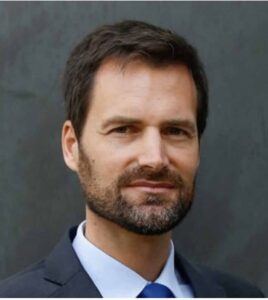
The Michelin Guide employs 130 inspectors worldwide who visit all the restaurants at least once every 18 months. This number can change over time. They have approximately 2,300 restaurants in their guide, which they visit multiple times annually. Among these, 169 restaurants are starred.
Their job involved awarding and revoking Michelin stars, which could have a significant impact on chefs’ careers. Starred restaurants receive between three and ten visits to ensure consistency.
Michelin reviewers are selected from professionals with extensive experience in the catering industry, which could include working in kitchens, the wine business, or hotels.
Reviewers maintain anonymity during their visits. They may occasionally be recognised, although less so than in the past. However, recognition is not important as their decisions are never based on a single experience.
Michelin Guide editor Rebecca Burr says: “Today’s businesses are not looking out for lone diners as much as they used to. Dining solo is definitely more common nowadays.” .
Michelin reviewers typically spend three weeks on the road, dining out every night and most lunchtimes, followed by a week off. The exact number of dinners eaten out may vary depending on whether they are traveling or in the office.
In the Bradley Cooper movie Burnt, the restaurant owner instructs his staff: “No one knows who they are. No one. They come. They eat. They go. But they have habits. One orders the tasting menu, the other orders a la carte. Always. They order a half a bottle of wine. They ask for tap water. They are polite. But attention! They may place a fork on the floor to see if you notice.”
They definitely do not drop a fork or a knife on the floor to be recognised, as suggested in the film. They tend to be often middle-aged gentlemen who are well-dressed and polite. One will go to the bar and order a drink and wait for the other one. One will order a tasting menu and the other one will order a la carte; that’s absolutely true.
Michelin claims its mystery inspectors are also just better at eating than the rest of us.
Many of them are former chefs, and they also have a unique ability to taste. They have the right number of taste buds where they should be on their tongues.
They tend to order a half-bottle of wine when it’s available. Inspectors eat out five days a week, so there is alcohol consumption to consider.
When reviewing restaurants, Michelin considers various factors, including ingredient compatibility, individual flair, proper execution, sourcing of ingredients, and value for money. However, the perception of value for money may differ between individuals, so Michelin provides prices in their guide to allow readers to make their own judgments.
The first Michelin star is awarded for excellent food, the second for chef’s creativity, and the third for original, sublime cooking with exceptional ambiance.
The longest standing Michelin Star in Ireland is held by Restaurant Patrick Guilbaud, now located in the Merrion Hotel. He held one star between 1990 and 1995, and two Michelin stars since 1996. Ireland’s first Michelin Star was awarded in 1974 to Matt Dowling’s Russell Hotel in Dublin and Declan and Michael Ryan’s Arbutus Lodge, followed by Ballylickey and Ballymaloe in 1975 and Peter Robinson’s Armstrong’s Bar Co Wicklow in 1977.
In 2019 celebrity French chef Marc Veyrat brought the Michelin guide before a French court to force inspectors to hand over their confidential judging notes to explain why his restaurant in the French Alps was stripped of its coveted third star. Veyrat’s La Maison des Bois restaurant in Manigod was demoted to two stars from the maximum three in January, a year after he secured the industry’s highest ranking.
He claimed the downgrade came after a Michelin inspector mistakenly thought he had adulterated a cheese soufflé with English cheddar, instead of using France’s reblochon, beaufort and tomme varieties.
Derek Bulmer who spent 33 years as the editor of The Michelin Restaurant Guide to Britain and Ireland, says he inspected every aspect of the restaurants, including kitchens, parking facilities, menu display, and the overall dining experience.. He operated under various aliases to keep his identity a secret and avoid being recognised and, despite consuming approximately 7,260 three-course meals during his career, the Michelin man managed to avoid getting a spare tyre.



